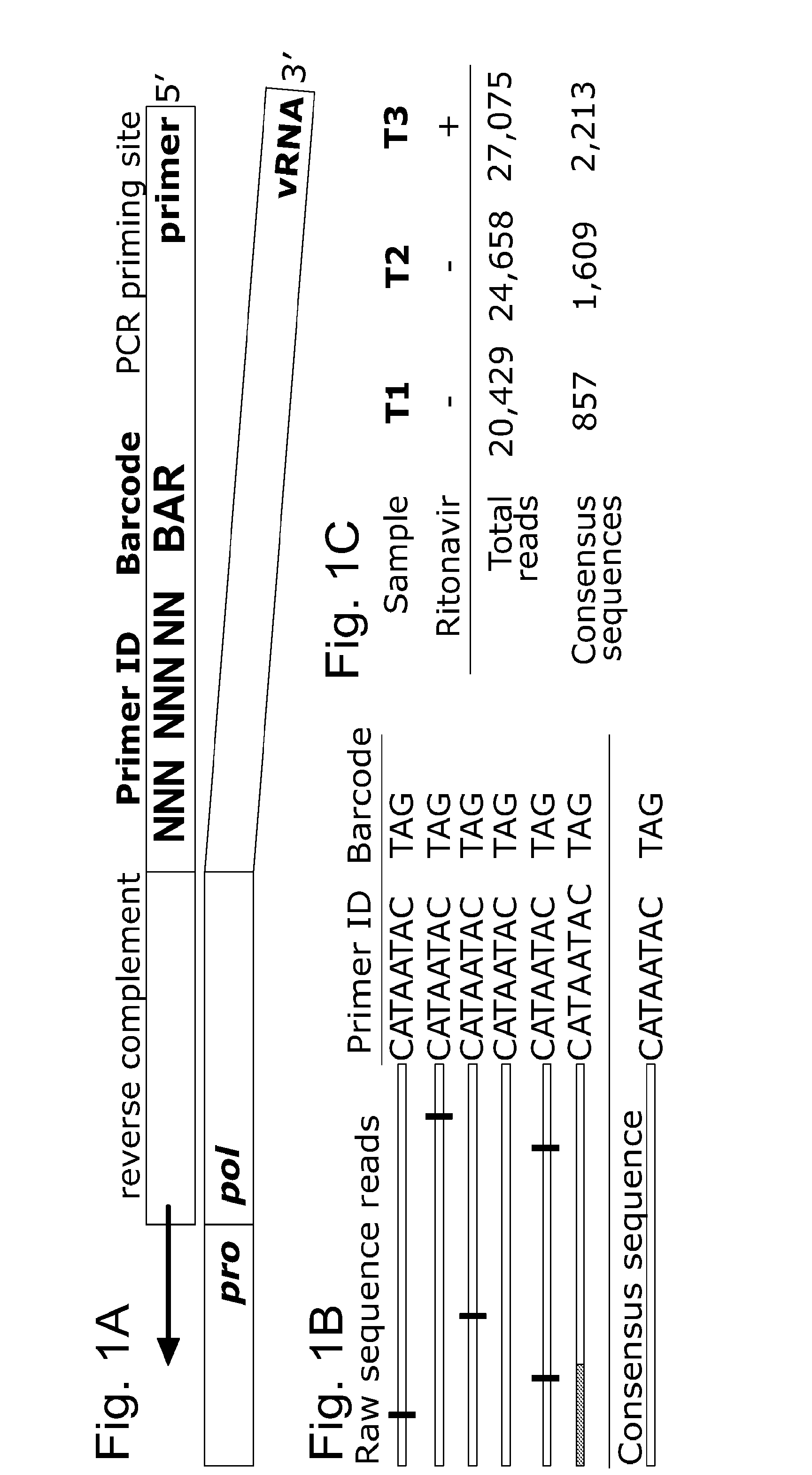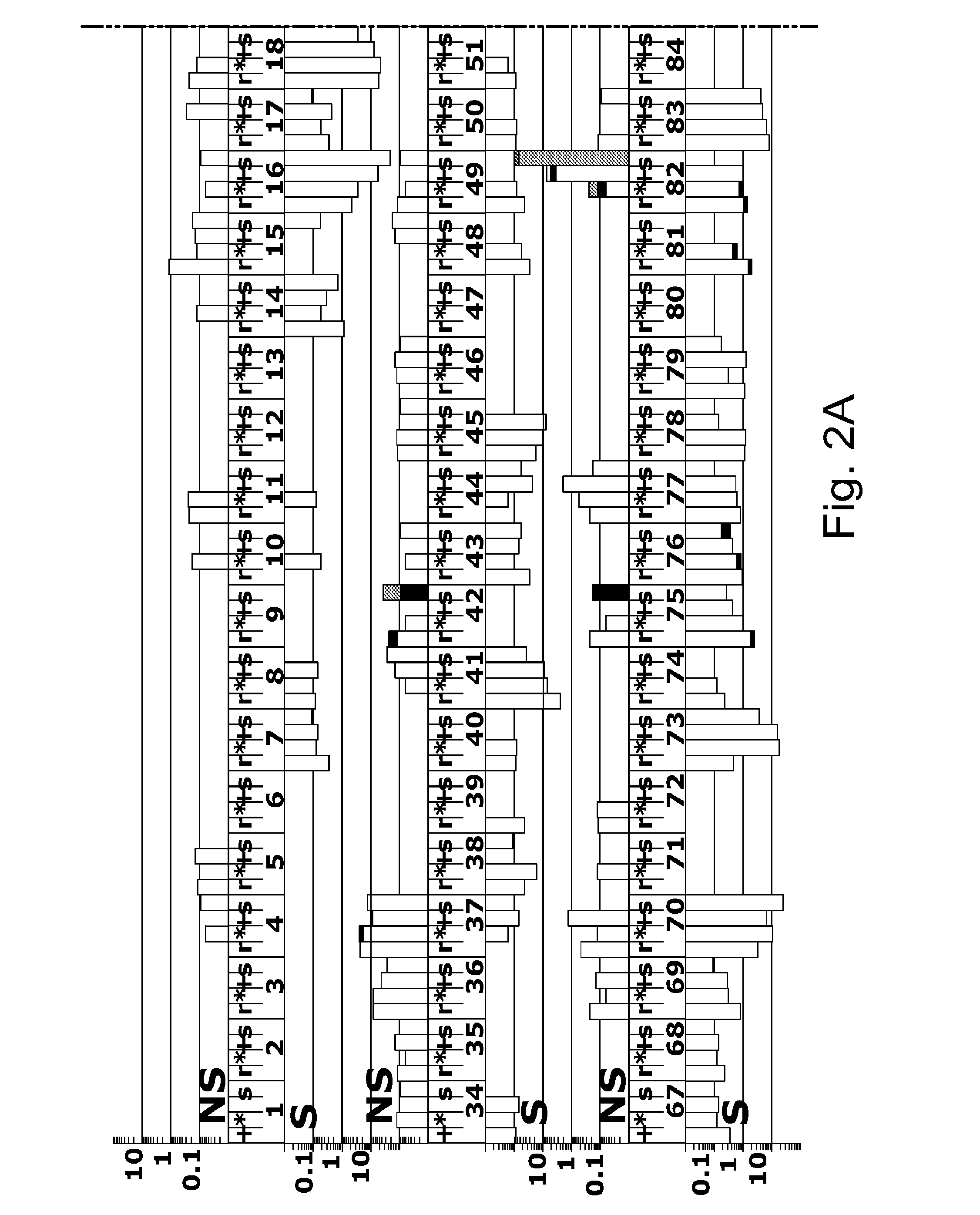Methods and uses for molecular tags
a molecular tag and molecular technology, applied in the field of molecular tags, can solve the problems of skewing the frequency of alleles, unrecognized sequence resampling, and bias in this sampling
- Summary
- Abstract
- Description
- Claims
- Application Information
AI Technical Summary
Benefits of technology
Problems solved by technology
Method used
Image
Examples
example 1
Use of Primer IDs for the Analysis of a Viral Template Molecule
[0148]High throughput sequencing allows the acquisition of large amounts of sequence data that can encompass entire genomes. With sufficient amounts of starting DNA, PCR is not needed before the library preparation step of the sequencing protocol. Sequencing miscalls inherent in high throughput sequencing approaches are resolved using multiple reads over a given base.
[0149]Deep sequencing can also capture the genetic diversity of viral populations, including intrahost populations derived from clinical samples. This approach offers the opportunity to view population diversity and dynamics and viral evolution in unprecedented detail. One place where the presence of minor variants is of immediate practical importance is in the detection of drug-resistant variants. Standard bulk sequencing methods typically miss allelic variants below 20% in frequency within a population. Alternative assays can detect less abundant variants ...
example 2
Accurate Sampling and Deep Sequencing HIV-1 Protease Using a Primer ID
[0191]Viruses can create complex genetic populations within a host, and Deep sequencing technologies offer the opportunity to extensively sample these populations. However, features of these techniques limit their application, particularly when a polymerase chain reaction (PCR) step precedes the sequencing protocol.
[0192]Typically, an unknown number of templates are utilized in initiating the PCR amplification and this can lead to unrecognized sequence resampling. PCR-mediated recombination can create artifactual linkage and disrupt real linkage. Finally, misincorporation during PCR and errors during the sequencing protocol can create artificial diversity.
[0193]We have solved this by including a random sequence tag in the initial primer such that each template receives a Primer ID. After sequencing, repetitive identification of the Primer ID reveals sequence resampling, which can then be used to create an accurate...
PUM
| Property | Measurement | Unit |
|---|---|---|
| temperature | aaaaa | aaaaa |
| temperature | aaaaa | aaaaa |
| temperatures | aaaaa | aaaaa |
Abstract
Description
Claims
Application Information
 Login to View More
Login to View More - R&D
- Intellectual Property
- Life Sciences
- Materials
- Tech Scout
- Unparalleled Data Quality
- Higher Quality Content
- 60% Fewer Hallucinations
Browse by: Latest US Patents, China's latest patents, Technical Efficacy Thesaurus, Application Domain, Technology Topic, Popular Technical Reports.
© 2025 PatSnap. All rights reserved.Legal|Privacy policy|Modern Slavery Act Transparency Statement|Sitemap|About US| Contact US: help@patsnap.com



